A Polish court has officially sanctioned two historic symbols linked with fascism and homophobia, the Phalanx and the Celtic cross – zakaz pedalowania [Loose translation: Schwulen verboten/Ban the fags.] From now on, these signs will be legally protected. They are symbols of an ultra-nationalist party, The National Rebirth of Poland, which started as an anti-minority organization in the 1930s. Before the Second World War, this party was known for violence, particularly the beating of Jewish and Ukrainian students at universities. Most recently, it played a key role at the November 11 Independence Day riots in Wroclaw and Warsaw.
The court invited two experts from Lublin, who claimed that these symbols were universal, and did not encourage hatred. Poland’s Green Party, (who have a strong track record of supporting queer equality and social justice) responded with a letter of protest, claiming that this will not be accepted in their region of Lublin, which suffered terribly under Nazism. The Greens had previously opposed an extremist march through the city’s former Jewish quarter in 2010, leading a picket against the brownshirts.
The militia of the National Rebirth of Poland is known for its Holocaust denial and homophobia. It is obsessed with reviving the 1930s, when Poland, like Romania and Hungary, was governed by a dictatorship. National Rebirth’s current platform promotes xenophobic, homophobic, misogynistic (they want a stronger ban on abortion than is already in place ) and anti-immigrant policies. Their ideology is by no means unique. Indeed, it is typical of the extremist politics that are currently enjoying a revival in eastern Europe. From skinheads in the streets, to extremist legislators, the movement towards the right is intense, and all-encompassing.
The political crises afflicting Hungary and Poland in particular are the most revealing in this regard, especially when examined in tandem. Post-Communist, post-colonial countries, both Hungary and Poland are equally premodern and tribalist. Citizenship tends to be defined by ethnicity. Minorities, feminists and gays are similarly considered suspect, disdained and demonized. Both countries would prefer to be both members of the European Union, and yet remain exceptions to its laws. For example, Hungary muzzles its press. Poland’s largest opposition party would prefer to reintroduce capital punishment, in contravention of EU law.
Both countries also experience pressure from various points in the political spectrum to curtail basic rights. Hungary’s ultranationalist government may take a more activist position towards journalists and intellectuals, but it is Poland’s street politics that pressures the state to heed its power. In this, Poland’s anti-democratic groups are no different than traditional fascist organizations. See, for example, their muscle flexing on Poland’s Independence Day. Ironically, it was ANTIFA anarchists who saved Warsaw’s honor, by going head to head with rightists. Otherwise the streets would have been monopolized by extremists.
Something went terribly wrong with the transition to democracy in Poland and Hungary, as both nations fell prey to the spell of militarism. Speaking as a Pole, I find the fact that Poland joined the invasion of Iraq without any legislative debate especially revealing. At least Hungary had a parliamentary discussion about committing its forces to Iraq, before deploying them. Like Poland, Hungary is said to have hosted CIA-run prisons, turning a blind eye to the human rights abuses associated with them. Both countries currently contribute troops to NATO’s mission in Afghanistan, with Poland sending the larger contingent of the two. What’s the benefit? That Poland might one day have the military training to retake the territory of its Baroque period? Might Hungarian forces similarly reconstitute Greater Hungary?
Serfdom did not end here until very late. Feudal-style hierarchy remains supreme at universities, museums,within state bureaucracies, and mainstream political parties. Servile academics are promoted. Critical art curators are intimidated or just fired. In Hungary anti-Semitism and anti-intellectualism joined forces in the witch hunt of philosopher Agnes Heller, a disciple of Georg Lukács for being critical of Prime Minister Viktor Orban. Distinguishing sharply between Stalinism and Nazism, Heller explains how the horrors of Communism are exaggerated at the expense of diminishing the Nazi Holocaust. The Hungarian philosopher points out that Stalin saved children whereas Fascism – in its radical rejection of human rights and Judeo-Christian culture – did not spare Jewish babies.
Between the two world wars, both countries were ruled by military juntas. These dictatorships developed internment camps for their political enemies. The first fascist of Europe, Admiral Horthy, ruled Hungary between 1919 and 1944. During his tenure, an ultranationalist “white terror” prevailed. The Polish military regime was initiated by a socialist-turned-dictator Jozef Pilsudski. Anti-Semitism flourished after his death. Hungary deployed Waffen-SS: Ungarische No. 1 and 2 as well Horst Wessel of Hungarian Volksdeutsch. During the Second World War, and its immediate aftermath (as Jan T. Gross and Irena Grudzinska-Gross have shown) Poland responded with greed towards Jewish suffering, not empathy.
In their search for national purity, Poland and Hungary still crush otherness. Instead of cultivating Catholicism as inner experience, Poles and Hungarians launch their own extremist crusades, to save their own identity. We badly need psychological change. Although psychoanalysis comes from here – the Freuds originally hail from Chassidic Chelm, Sandor Ferenczi from Hungary, and Melanie Klein‘s family from Lviv – the “Jewish and sexual science” remains ridiculed. Both countries require serious examination of their national conscience, and a sublimation of their destructive drives, to use the correct clinical terms. And social change! Let’s not forget that. Without self-analysis, there’ll be no movement forward.
Thanks to Joel Schalit in Berlin and Tim O’Flaherty in Lublin for their help with the editing of the text.
Photograph courtesy of Marcin Lachowicz. Published under a Creative Commons license.
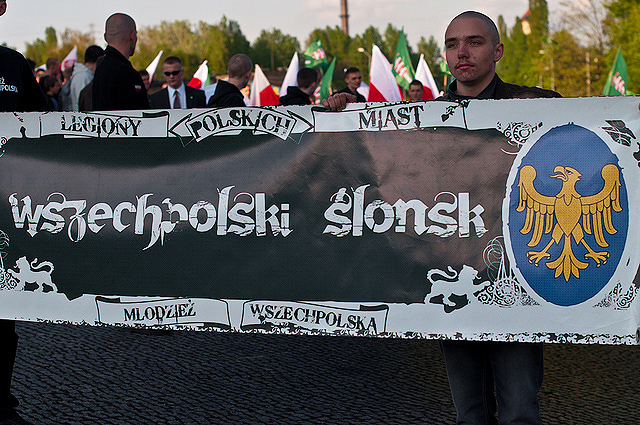
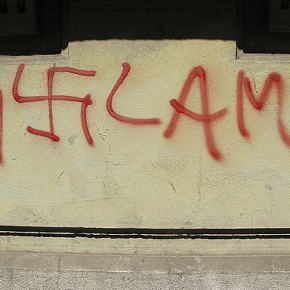

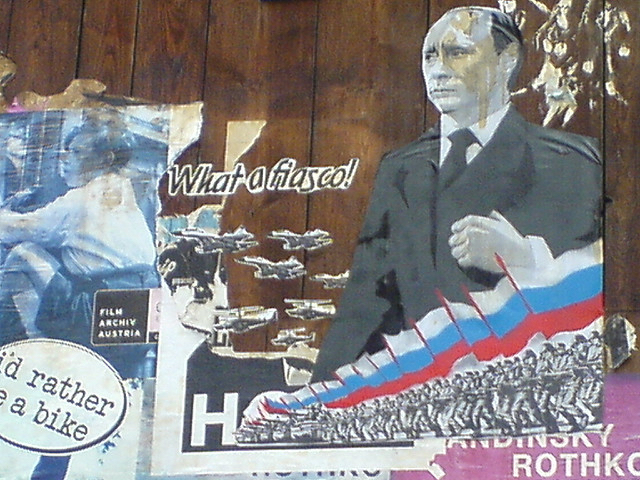
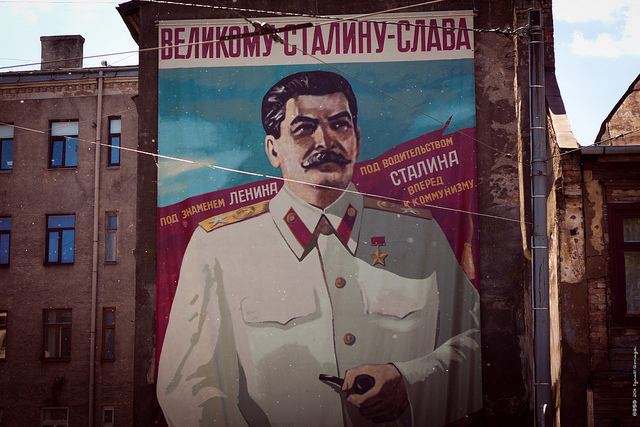
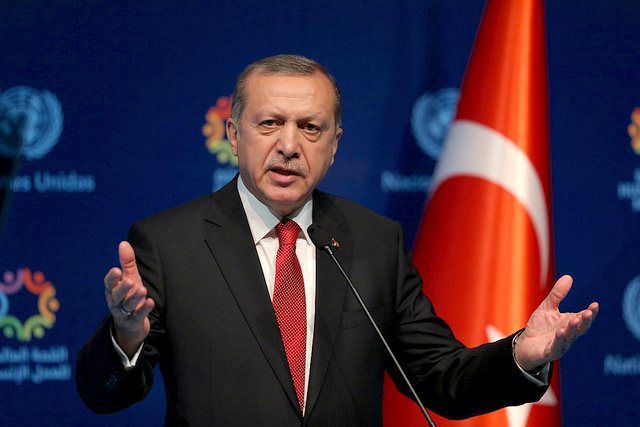
I question the translation “phalanx” from whatever was in the original court judgement.
The term “Phalanx” refers to the military formation of hoplite militia common to the city states of ancient Greece, and then to similar military organizations based on the same tactical principles. It is not a symbol. A picture of a phalanx would simply baffle people. It is too complicated a graphic to work as a typical political symbol (imagine the number of ultra-nationalists that would be caught spray-painting their symbols on walls in such a circumstance). Possibly the writer confuses this with the “Falange” of Spanish fascism (an organization, not a symbol), or the similarly named contemporary organization of Lebanese Christian militia.
Perhaps the writer means “fasces,” the bundle of rods carried by Roman officials, and symbol of Italian fascism?
Thanks you for your comments! In the original the court used the word “falanga” which in Polish covers the names of the sign (a hand with a sword), of a far-right organization in inter-war Poland and of the Greek military formation.